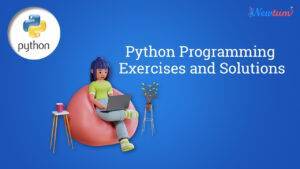In this tutorial, we show you how to use Python code to convert binary to decimal. In addition, we go over the different uses of binary to decimal conversion in sectors including digital electronics, networking, and computer programming. Readers will have a thorough understanding of the binary to decimal conversion process and its significance in numerous industries by the end of this study.
The ability to convert from binary to decimal in Python is crucial for programmers who work with computers, digital electronics, and networking hardware. While people normally prefer to work with decimal numbers, computers are innately capable of understanding binary.
Python Program to Convert Binary to Decimal Without Inbuilt Function
# Convert Binary to Decimal in Python
def binaryTodecimal(n):
decimal = 0
power = 1
while n>0:
# Find the remainder of the given binary number.
rem = n%10
n = n//10
decimal += rem*power
# For every remainder multiply it with the power of 2.
power = power*2
return decimal
print( binaryTodecimal(1111) )
Step 1: Define the function
The binary number that we want to convert to decimal is provided as the sole input to this function, denoted by the letter n.
Step 2: Initialize variables
Initialize the decimal variable to 0 and the power variable to 1. These variables will be used later in the code to keep track of the decimal equivalent and the place value of the current binary digit being processed.
Step 3: Enter into the while loop
This while loop will continue to execute as long as n is greater than 0. This ensures that we process all of the binary digits in the input.
Step 4: Calculate the remainder
Calculate the remainder of n when it is divided by 10. This gives us the rightmost binary digit of n.
Step 5: Remove the last digit from the binary number
Remove the last digit from n by integer dividing it by 10. This shifts all of the digits in n one place to the right, effectively removing the rightmost digit that we just processed.
Step 6: Calculate the decimal equivalent
Calculate the decimal equivalent of the current binary digit by multiplying the remainder (rem) by the current place value (power) and adding it to the decimal variable.
Step 7: Update the place value
Update the place value (power) by multiplying it by 2. This ensures that the next binary digit processed will have the correct place value.
Step 8: Return the decimal equivalent
Return the decimal variable, which has the final binary number’s decimal.
Step 9: Call the function
Call the binaryTodecimal() function with the input binary number 1111. This prints to the console the binary number’s decimal representation. In this case, the output is 15.
Output:
15When we execute the above code, the output will be 15. The binary number 1111 is equivalent to the decimal number 15. Therefore, the binaryTodecimal() function returns 15 as output.
You can also watch your You tube Video – Convert Binary to decimal in python.
Applications of Binary to Decimal Conversion:
Binary to decimal conversion is a fundamental concept in computer programming. It is essential in various fields such as digital electronics, computer science, and networking.
- Computer programming: Binary is the native language of computers, but humans usually find it easier to work with decimal numbers. For this reason, binary to decimal conversion is an essential task in computer programming. For example, a programmer may need to convert binary data stored in a file to decimal for analysis or display.
- Networking: Networking devices such as routers and switches use binary to represent IP addresses. However, IP addresses are more commonly represented in decimal form (e.g., 192.168.0.1). Therefore, binary to decimal conversion is necessary when working with IP addresses. For instance, network administrators may need to convert binary IP addresses to decimals to troubleshoot network issues or configure routing tables.
- Electronics: Binary to decimal conversion is used in digital electronics to convert binary signals to decimal displays. For example, digital clocks and calculators use binary to represent numbers internally, but display the numbers in decimal format. Binary to decimal conversion is required to convert the internal binary signal to a decimal display.
Conclusion
In conclusion, binary to decimal conversion is a crucial concept in computer programming. Python provides an easy-to-use platform to perform this conversion. We have explained the process of binary to decimal conversion in a Python code snippet. The application of this conversion extends to various fields such as digital electronics, computer science, and networking.
For More Python Programming Exercises and Solutions check out our Python Exercises and Solutions



